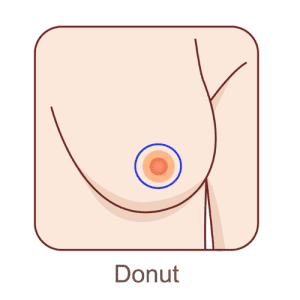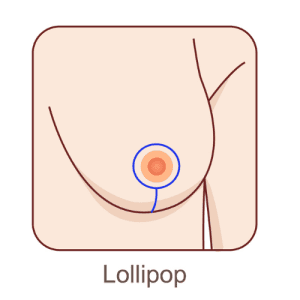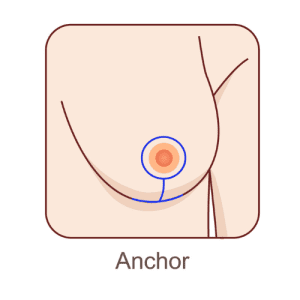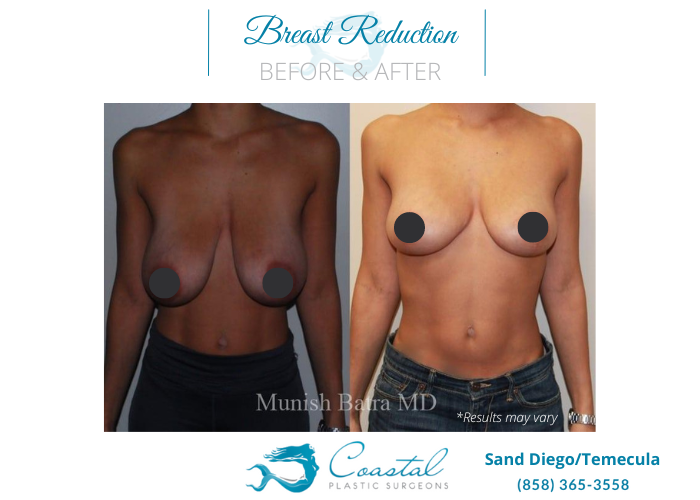3 Minute Read:
Breast reduction can be one of the most beneficial and rewarding plastic surgery procedures. This is because many women who undergo this surgery have been dissatisfied with their breasts for a long time.
Breast reduction is performed to remove excess breast fat and glandular tissue, creating lighter, better-contoured, and more proportionate breasts. A breast lift is often incorporated into this technique to lift and tighten skin and internal tissues.
By undergoing this surgery, many women find relief from physical pain in the back, neck, chest, and shoulders and increased self-esteem in social, professional, and intimate settings.
These results are some of the reasons that over 95% of women who undergo breast reduction report they would do it all again if it meant achieving the results that they did.
Are There Different Types of Breast Reduction?
While all breast reduction surgeries are performed to reduce the size of overly large breasts, different incision options allow for varying levels of correction. The right technique for you will depend on the extent of reduction you are hoping to achieve.
Minimal Reduction With the Donut Technique
 Women looking for minimal reduction (and do not experience significant breast sagging) may be candidates for the donut incision.
Women looking for minimal reduction (and do not experience significant breast sagging) may be candidates for the donut incision.
This incision option involves two concentric incisions around the areola (the darker skin surrounding the nipple). The skin between these two incisions is excised, and a small amount of tissue and fat can also be removed. The incision is then closed, leaving a single scar around the areola.
Very few women interested in breast reduction qualify for this technique. This is because women wanting to reduce the size of their breasts often are eager for a more substantial size change.
Moderate Reduction With the Lollipop Technique

The lollipop technique is one step up from the donut incision and allows for a moderate amount of reduction.
This incision resembles just what it sounds like: a lollipop. An incision still runs around the areola (like the donut), but an additional incision is made vertically down the lower pole of the breast.
These incisions allow for the reduction of skin, fat, and glandular tissue while allowing your surgeon the ability to sculpt a nicely shaped breast.
This option also allows for the repositioning, lifting, and resizing the nipple-areola complex (NAC).
Significant Reduction With the Anchor Technique

Most women considering this procedure are looking for a major change to their oversized breasts. This type of reduction is best accomplished with an anchor or inverted-T incision.
This incision starts with a lollipop incision and includes an incision across the inframammary fold (breast crease above the ribs). Here, substantial tissue and fat can be removed, and the NAC can be repositioned and resized. While this option is the most complex, it is often recommended.
Ultimately, the anchor lift often presents the best results as it allows for more reduction and better shaping of the breasts.
What Kind of Scarring Does Breast Reduction Leave?
The level of scarring present after your breast reduction will depend on the incisions made. Scars will develop at all incision sites, and they are permanent. Fortunately, scars fade with time, and these are located in areas covered with bras and bathing suits.
Tips to Minimize Scars
While there is no way to erase scars, you can help reduce their visibility with the following practices:
- Follow all recovery guidelines (proper healing means a better-looking scar)
- Avoid sun exposure
- Use topical scar treatments once the incisions have healed (including creams and silicone strips)
What Does Breast Reduction Look Like?
Visit our breast reduction before and after gallery to see more transformations.
Interested in Breast Reduction in San Diego, CA?
If you are eager to reduce the size of your breasts, contact the skilled team at Coastal Plastic Surgeons in San Diego, California. Contact our offices by calling (858) 365-3558 or filling out our online contact form.

